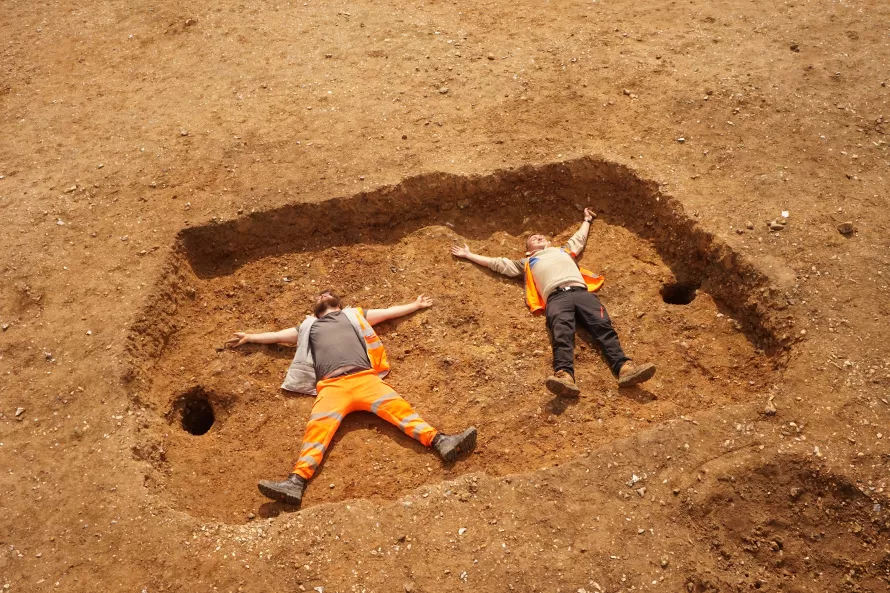After an impressive 24 weeks and some 8.4ha of archaeology uncovered, our time on site is finally coming to a close. We’ve had a really lovely time at Abbot’s Vale, there’s been lots to find and lots to learn. Just because we’re done on site, doesn’t mean the work has finished, we are in fact only at the start. The next step is for us to take all the finds, soil samples and information we’ve gathered on site and really start digging into the meaning of it all. Once all the finds are washed and the soil samples processed, they’ll go to specialists who will catalogue everything and write reports on the significance of our discoveries. When we have all that information, it’ll get pulled together into one big report. This reporting process will probably take a couple of years to do (this is quite normal, honest!).
In the meantime, let’s have a look at some of what we’ve found.
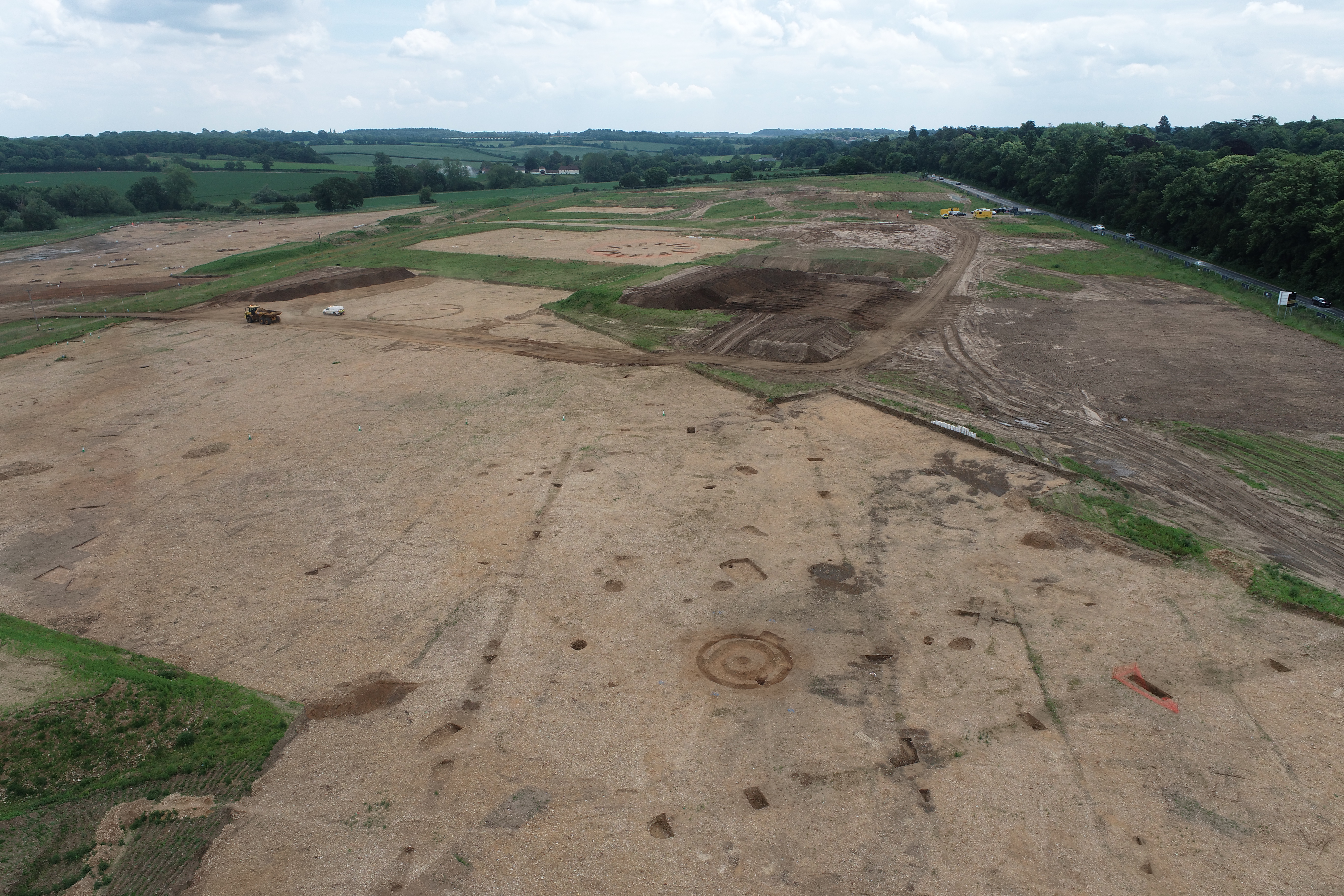
Above: view south-east along the cursus with the two barrows and henge in the distance.
One of the highlights of this site has been the amount of Neolithic and Bronze Age remains. If you’ve been following along with us, you’ll remember in our Week 4 Update we showed you around the cursus, henge and barrow. Since then, we found another barrow! This one is totally different to the others – it’s a super small double ring ditch (measuring just 7m in diameter) with a central cremation and several pits cutting through the outer ditch. You can see it in the foreground of the drone photo above. Close by to this barrow, we’ve also identified several pits containing Neolithic pottery, so we’re looking forward to finding out whether the pottery from these features is contemporary.

Above: archaeologist Rob looking at the Neolithic pottery he found.
We haven’t had too much in the way of Roman remains on site, which is a rare occurrence as those pesky Romans usually get everywhere! We’re finding a background scatter of Roman finds in the later Anglo-Saxon features but the main proper Roman feature we have is a large oven. As a fairly substantial feature and the only example we have on site, we’ve decided to give it some special treatment and so are taking a whole host of samples from its contents so that we can do some fancy science further down the line. The main samples we’re taking are for X-ray fluorescence (known in shorthand as XRF). We’re hoping these will tell us the chemical composition of any materials burnt in the oven. We’re also taking some samples for Fourier Transform Infrared spectroscopy (again, as that’s a bit of a mouthful to say, we just refer to it as FTIR). These samples should hopefully give us information on firing temperatures. Finally, we’re hopefully going to be able to do some this section micromorphology, which will provide us with more detailed information on the makeup of the fill sequence and tell us if the oven was used repeatedly and/or whether it was used for anything else. So there’s lots to learn here!
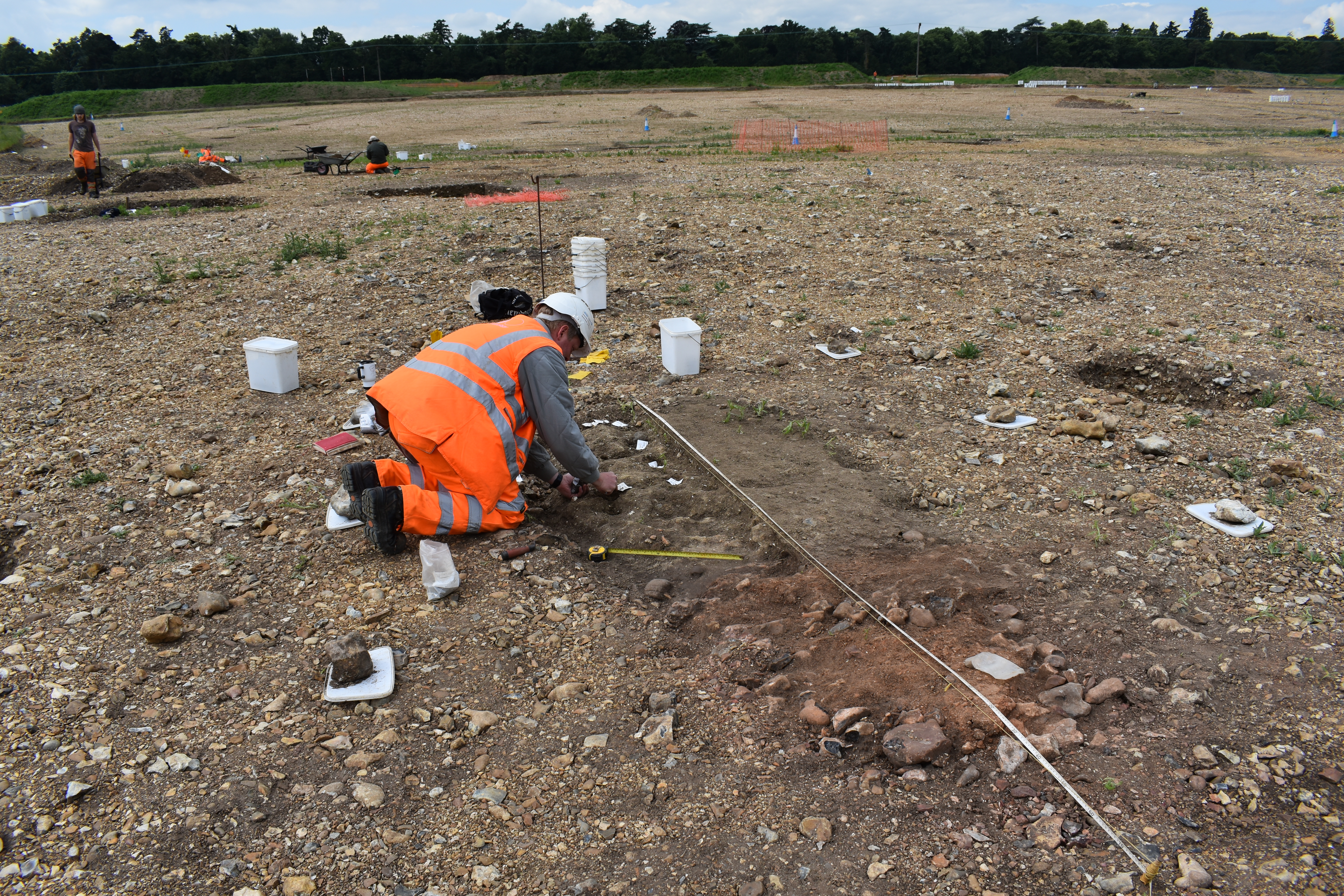
Above: Archaeologist Tom taking some XRF samples.
Down in Area 3 is where the majority of our team have been working, investigating the seemingly endless number of SFBs we’ve got. Last count was in the region of 50+ of these structures, which is rather a lot…
Thankfully, the SFBs have provided us with an abundance of information about the people who lived and worked here, and with so many examples of SFBs in one location, we’re looking forward to the post-excavation process to try and answer questions. Such as: were all these buildings in use at the same time or are we seeing several phases of building? Is there evidence for seasonality to when they were used? Can we tell if specific things were manufactured in particular buildings? And clearly judging from the below, digging all these endless SFBs has sent some of the team into a bit of a state of madness! Understandable really.
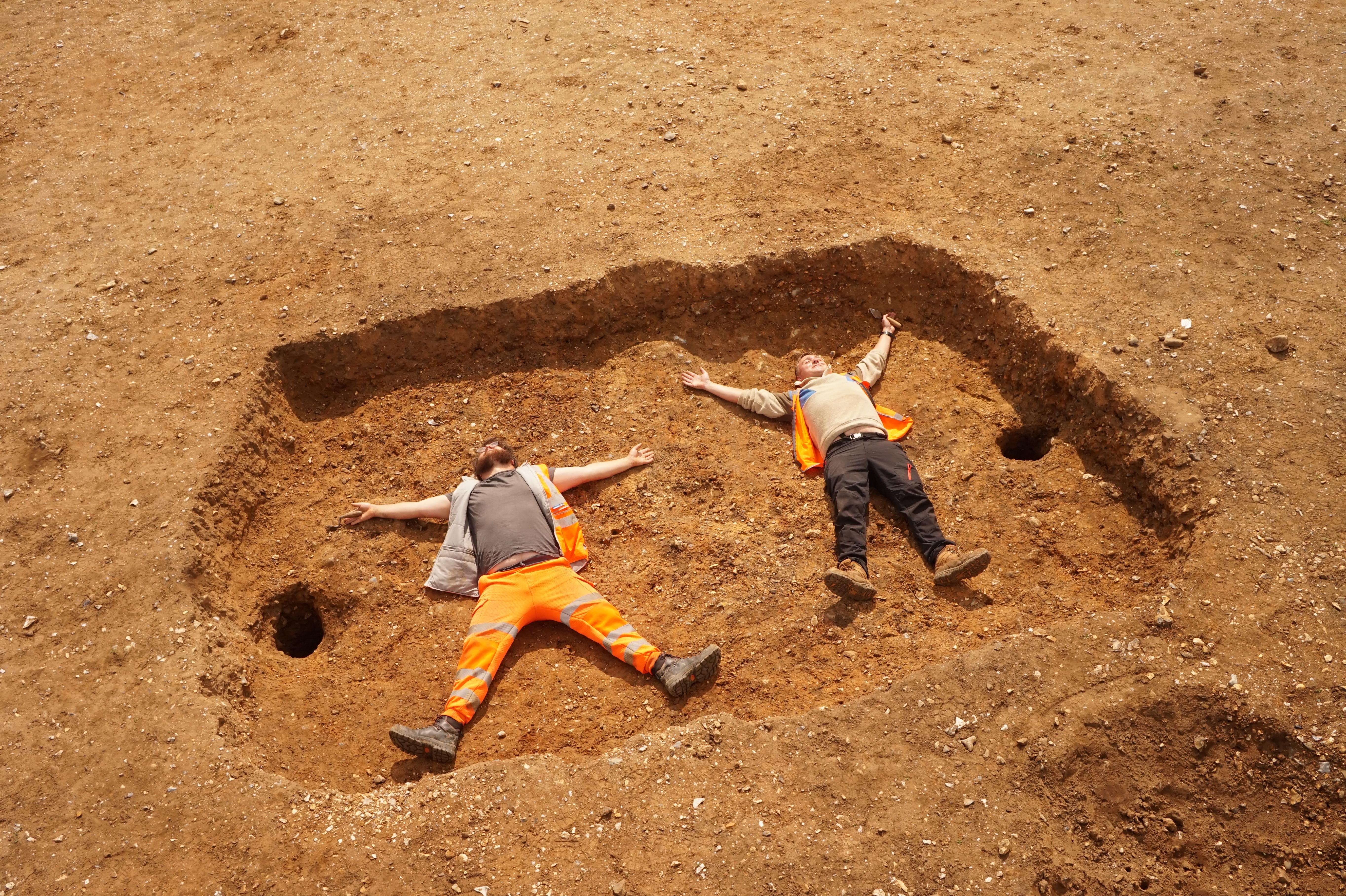
Above: archaeologists Sam and Rob recovering from excavating this large SFB.
Now, we can’t possibly leave without reminding you all of our fabulous Anglo-Saxon cooking pit (which Laura told us all about in the Week 5 update). When we found this, we were all rather excited because we hadn’t seen anything like it before. And without wanting to toot our own horns too much, now that we’re done on site, we can tell you that we’ve actually got three of these features! This first one we found is by far the largest and best preserved, measuring about 2.7m long and 1.8m wide. Once we removed all the backfill and burnt flint from this feature, we found an amazing and well-preserved burnt wooden structure at the base, made up of beams and roundwood pieces. Our wood specialist came out to site to record these pieces and she thinks that the beams formed a platform which the flint nodules would have been stacked on top of. You can see the remains of this wood around the edges of the photo below.
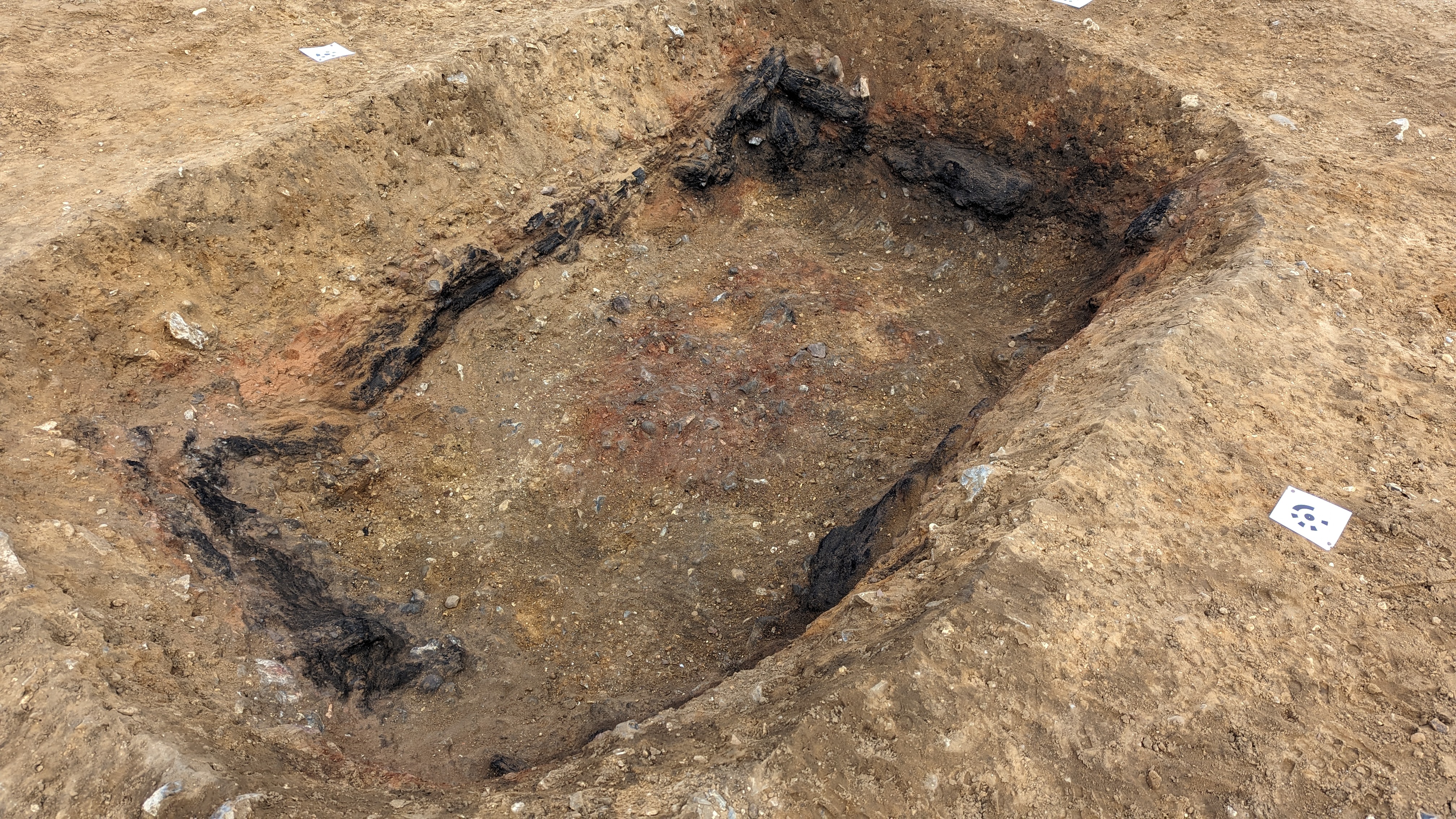
Above: Anglo-Saxon cooking pit with in-situ burnt wood.
Finally, I’d like to say a huge thank you to the field team for their hard work and enthusiasm. It’s been a special one. So a big shout out to: Emily Abrehart, Freya Bates, Yerai Francisco Benet, Anne-Laure Bollen, Dave Browne, Ed Cole, Bathany Coleman, Sam Corke, Alessandro Dell’Anno, Matt Edwards, Dan Firth, James Fish, James Fox, Steve Graham, Gina Harris, Jim Harris, Gareth Hayes, Marcus Headifen, James Henderson, Naomi Herbert, Sam Hogarth, Josh Hutting, Liz Jeffries, Eleanor Johnson, Will Kinchin, Toby Knight, Greg Krypczyk, Stuart Ladd, Tim Lewis, Neal Mason, Steph Matthews, Callum McGinty, Jack McGroarty, Tom Midgley, Laura Mitchell, Rob Neeson, Sophia Newton, Elodie Powell, Cain Redmayne, Lucy Ryan, Denis Sami, James Smalley, Lily Tosner, Ed Worsley, Emily Wright and Rowena Young.

